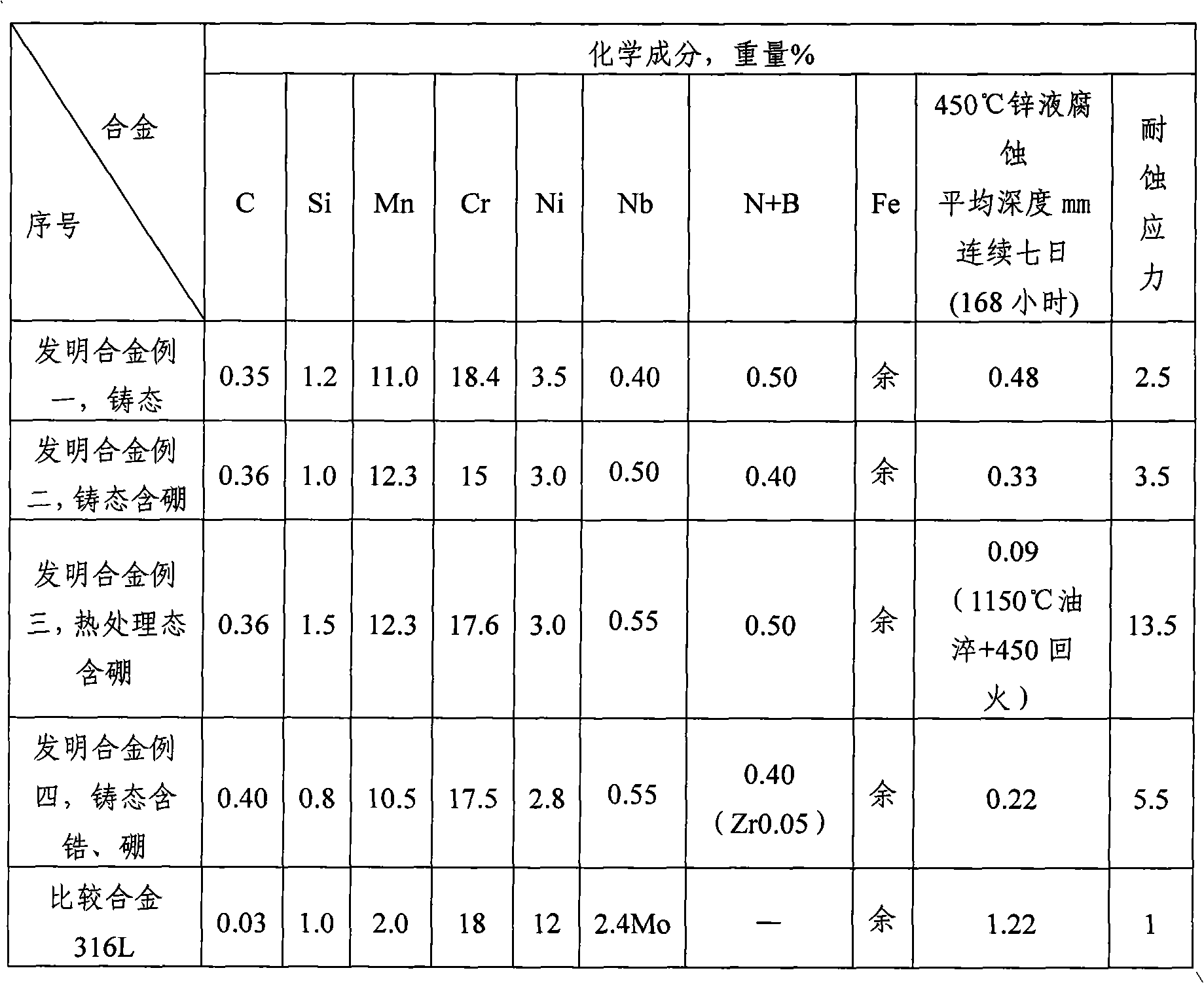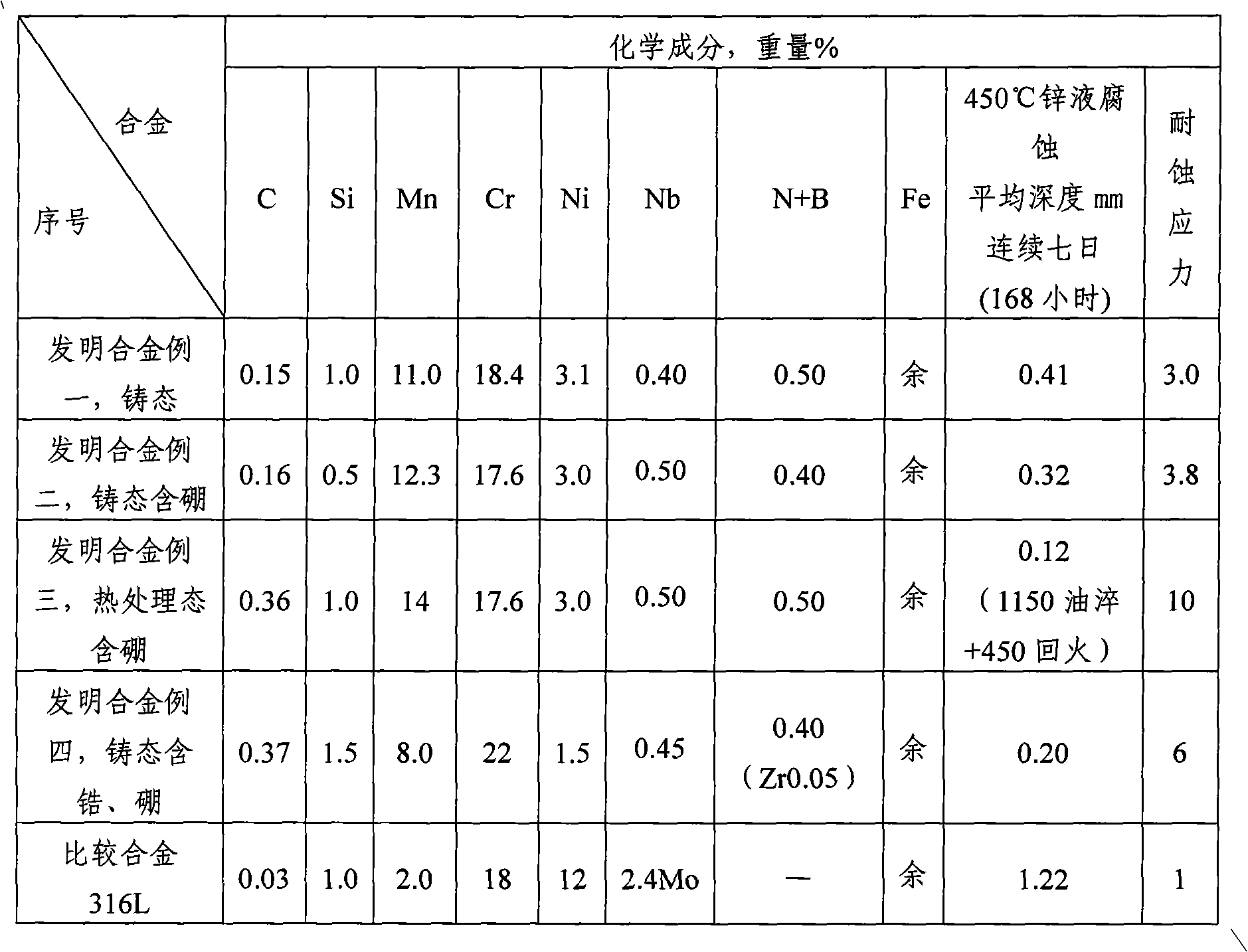High manganese austenitic iron-based alloy containing boron
An iron-based alloy and austenitic technology, which is applied in the field of corrosion of boron-containing high-manganese austenitic iron-based alloys and its heat treatment, can solve the problems of increasing zinc consumption, reducing the operating rate of hot-dip galvanizing units, bending deformation of roll bodies, etc. question
- Summary
- Abstract
- Description
- Claims
- Application Information
AI Technical Summary
Problems solved by technology
Method used
Image
Examples
Embodiment 1
[0031] The alloy chemical composition listed in the table below is smelted and cast into a slab in a 10 kg vacuum induction furnace. Then cut and processed into impact, tensile and 15×10×5mm corrosion specimens. The corrosion test was carried out in the graphite crucible of the well-type resistance furnace. The liquid zinc is heated to 450°C, using a full immersion method. After a static corrosion test for seven consecutive days (168 hours), the average corrosion depth of the sample (ie, the average thickness loss of the sample) is measured.
[0032]
[0033] From the above table, it can be seen that the corrosion resistance of liquid zinc in alloy example 1 of the invention is 2.5 times that of 316L, and the corrosion resistance of liquid zinc in alloy example 2 of the invention is 3.5 times that of 316L cast alloy. The corrosion resistance to liquid zinc of Inventive Alloy Example 3 is 13.5 times that of 316L, and the corrosion resistance of Inventive Alloy Example 4 is 5.5 t...
Embodiment 2
[0036] The alloy chemical composition listed in the table below is smelted and cast into a slab in a 10 kg vacuum induction furnace. Then cut and processed into impact, tensile and 15×10×5mm corrosion specimens. The corrosion test was carried out in the graphite crucible of the well-type resistance furnace. The liquid zinc is heated to 450°C, using a full immersion method. After a static corrosion test for seven consecutive days (168 hours), the average corrosion depth of the sample (ie, the average thickness loss of the sample) is measured.
[0037]
[0038] It can be seen from the above table that the corrosion resistance of liquid zinc in the first alloy of the invention is 3 times that of 316L, and the corrosion resistance of liquid zinc in the second alloy of the invention is 3.8 times that of the 316L cast alloy. Inventive alloy example 3 has a liquid zinc corrosion resistance 10 times that of 316L, and invention alloy example 4 has a liquid zinc corrosion resistance 6 ti...
PUM
| Property | Measurement | Unit |
|---|---|---|
| tensile strength | aaaaa | aaaaa |
Abstract
Description
Claims
Application Information
 Login to View More
Login to View More - R&D
- Intellectual Property
- Life Sciences
- Materials
- Tech Scout
- Unparalleled Data Quality
- Higher Quality Content
- 60% Fewer Hallucinations
Browse by: Latest US Patents, China's latest patents, Technical Efficacy Thesaurus, Application Domain, Technology Topic, Popular Technical Reports.
© 2025 PatSnap. All rights reserved.Legal|Privacy policy|Modern Slavery Act Transparency Statement|Sitemap|About US| Contact US: help@patsnap.com


